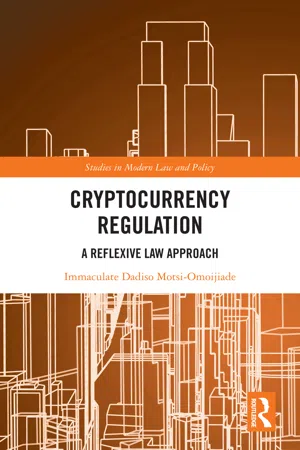
Cryptocurrency Regulation
A Reflexive Law Approach
Immaculate Dadiso Motsi-Omoijiade
- 168 pagine
- English
- ePUB (disponibile sull'app)
- Disponibile su iOS e Android
Cryptocurrency Regulation
A Reflexive Law Approach
Immaculate Dadiso Motsi-Omoijiade
Informazioni sul libro
This work argues that current cryptocurrency regulation, particularly in the areas of enforcement and compliance, is inadequate. It proposes reflexive regulation as an alternative approach. This book provides strategies for a reflexive regulation approach to cryptocurrencies, developed through the identification of the internal self-regulatory mechanisms of the cryptocurrency system. Apportioning blame for current problems to the regulators' failure to take into account the inherent technical features of cryptocurrencies, the work promotes reflexive regulation in which the law acts at a subsystem-specific level to install, correct, and redefine democratic self-regulatory mechanisms. It provides strategies for this approach, developed through the identification of the internal self-regulatory mechanisms of the cryptocurrency system. These are identified as imbedded in the technical functionality of computer code and consensus-based distributive governance mechanisms respectively. In addition to providing a technical, historical and legal overview of cryptocurrencies, the book concludes by providing recommendations aimed at redirecting code and consensus towards achieving regulatory goals. In this way, it draws from the theory of reflexive law, in order to provide both a substantive and jurisprudential perspective on the regulation of cryptocurrencies and to illustrate how Financial Technology (Fintech) regulation can only be effective once regulators consider both the 'Fin' and the 'tech' in their regulatory approaches. The book will be of interest to researchers, academics and policy-makers working in the areas of Financial Regulation and Jurisprudence, Financial Crime, Banking Regulation, Information Systems, and Information Technology.